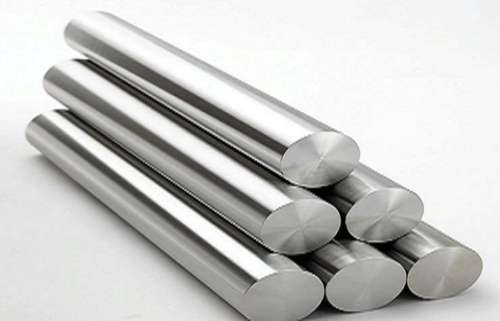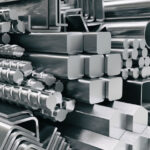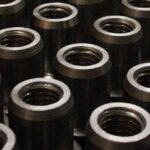
A steel with a higher than usual content of sulfur and phosphorus intended for the fabrication of parts for high-speed automatic and semiautomatic machine tools. Free-cutting steel is produced in the form of rods, and it contains 0.08–0.45 percent carbon, 0.15–0.35 percent silicon, 0.6–1.55 percent manganese, 0.08–0.30 percent sulfur, and 0.05–0.16 percent phosphorus. The high sulfur content leads to the formation of inclusions (for example, manganese sulfide) disposed along the grain. These inclusions facilitate shearing and promote grinding and easy chip formation. For these purposes, free-cutting steel is sometimes alloyed with lead and tellurium. These steels are used where rapid machining and high quality surface finish after machining is the prime requirement. It may be noted that free cutting steels have low dynamic strength and are more liable to corrosion. These steels are frequently supplied in the cold drawn form and have high tensile strength and hardness but less ductile when compared to ordinary carbon steels.
Free-cutting steels – which are commonly used in many mass production fields such as the automobile industry and household appliances – contain sulfur and some other elements, including tellurium, bismuth and lead, which promote machinability.
In particular, the sulfur ensures the fragmentation of the chip, lead reduces the friction between the tool and piece, extending the life of the tools, and the tellurium and bismuth further accentuate these characteristics.
Free-cutting steels are usually supplied in bars or rolls without heat treatment; some of these can however be tempered, normalized or annealed before finishing.


